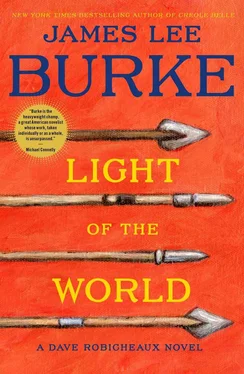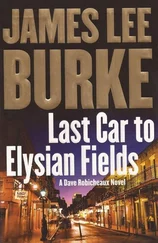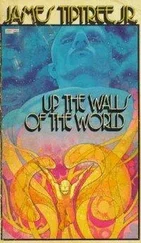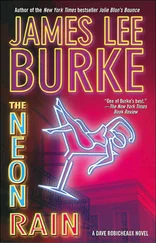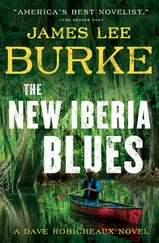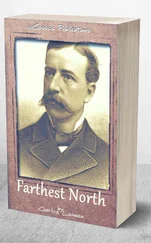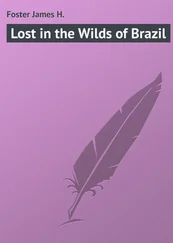The greatest oddity on the river is the quality of light. It doesn’t come from above. There is a mossy green-gold glow that seems to emanate from the table rocks that plate the river bottom, and the trout drifting back and forth in the riffle are backlit by it.
Molly and Clete and I built a fire from driftwood and made cowboy coffee and melted a stick of butter in a skillet and browned ham-and-onion sandwiches that we added strips of cheese and bacon to. After the sun had climbed above the rim of the canyon, the first flies rose from the bushes along the banks and hovered in the spray above the riffle. We waded into water up to our hips and fished a pool behind a beaver dam where both rainbows and cutthroats were hitting anything we threw at them. They hit with the same fervor you see in trout when the first mayflies hatch. They rise quickly out of the shadows, rolling the fly, slapping their tails on the surface, then running with it for the bottom of a pool, your rod arching and throbbing in your palm. All of the worries and concerns that plague us on a daily basis seem to dissolve and disappear, like smoke, inside this sun-spangled canyon deep in the heart of Blackfoot country.
Jim Bridger and Andrew Henry and Will Sublette had been here, and Hugh Glass, who later crawled a hundred miles to the Missouri Breaks after he was mauled by a grizzly on the Milk River, and Lewis and Clark and Sacagawea and the black man named York, who was the delight of the Indians because he could walk on his hands. To me, this was a magical land, watched over by ancient spirits, a reminder of the admonition in Ecclesiastes that the race is not to the swift or the proud and that the earth abideth forever.
We worked our way upstream a half mile from the truck, and while Molly collected rocks, Clete and I began casting on a long blue-green undulating ribbon of trout water bordered on one side by a pebble beach with no brush and, on the other side, a grassy bank full of grasshoppers that fell regularly into the stream and brought the browns and the bulls to the top of the pools.
Clete was ahead of me, his right arm lifting the fly neatly and cleanly from the riffle before it could be pulled under by the current. His hand would stop at twelve o’clock high, and with his wrist, he would create a slow elliptical pattern over his head, drying the fly, filling the air with a swishing sound that was almost musical.
Then I heard his cell phone ring. He reeled in his line and hooked his fly in the cork handle of his rod and waded to shore. I couldn’t hear his conversation over the stream, but I saw the concern in his face and the way he turned his back to me and kept glancing over his shoulder, as though he wanted to conceal the intrusion of the outside world on this perfect stretch of river we had stumbled upon.
That was when I saw something that later seemed too much for coincidence. At least five canine animals were running through the trees on the far bank. At first I thought they were coyotes. But as a rule, coyotes are loners and don’t run in packs. Unlike wolves, they sniff the ground, not the wind, in search of rabbit trails and pocket gophers and chipmunk dens. The canines running through the trees were dark, their ears pointed forward, their heads erect, their tails thick and bushy. The humps on three of them were silver-tipped. I had no doubt they were wolves.
I saw Clete close his phone and put it in his pocket. I walked up on the beach, water squishing out of my tennis shoes. “Was that Gretchen?” I asked.
“How’d you know?”
“The look on your face. You don’t hide your emotions well. Did Surrette come back?”
“The National Transportation Safety Board issued its report on the crash of the Sierra Club plane. There was an explosion inside the cabin. It was probably a bomb.”
“How did it get on the plane?”
“Gretchen said she and the pilot left it parked by a general store on the edge of the Blackfoot rez. The guy who runs the store is a relative of Angel Deer Heart.”
“Gretchen thinks the Indians are involved in blowing up a plane?”
“No, she thinks somebody connected with the Youngers planted the bomb while she and the pilot were taking photographs up the road.”
“Maybe the bomb was put on there earlier,” I said.
“She says the cabin was clean when she got on at Missoula. At least as far as she could tell.”
“How is Gretchen taking it?”
“The pilot was her friend. How do you think she’s taking it?”
“Let’s go back to town,” I said.
“I didn’t mean to sound sharp.”
“We had a good time. Let’s get Molly and head home.”
He looked across the river into the trees. He pointed. “Do you see what I’m seeing?”
“They’re wolves.”
“I never heard of wolves on the Blackfoot. Are they part of that reintroduction program?”
“I don’t know, Clete. I’m not sure about anything anymore.”
We walked back down the river, over rocks that were as white as eggs, the trees ruffling on either side of the canyon. A blue rubber raft full of revelers floated past us, all of them toasting us with their beer cans, their faces happy and pink with sunburn. I wanted never to let go of this place. We walked around a bend and saw Molly coming toward us, her mouth moving, her words lost in the wind. Behind her, I could see my truck parked up on the bench, the sun hammering like a heliograph on the windshield.
“What’s wrong?” I asked.
“I walked down below the bend to collect some pieces of driftwood. I didn’t lock the truck. You’d better look inside.”
“What is it?” I said.
“See for yourself. I didn’t touch anything.”
I took off my fly vest and set it down on the rocks and laid my fly rod on top of it. As I approached the truck, I could see a pair of blue women’s panties hanging from the rearview mirror. There was no movement in the trees, no sign of tire tracks other than mine on the access road, nobody on the bank of the river except Molly and Clete. I opened the passenger door and removed the panties from the mirror. There were specks of dried blood near the elastic band. Clete had been standing behind me. He removed a small pair of binoculars from the canvas rucksack he always carried on fishing trips, and began scanning the woods, then the far bank.
“Maybe it was some college kids playing a prank,” he said. “A bunch of them kayak through here.”
Someone had placed a Montana driver’s license on the dashboard. I picked it up by the edges and looked at the laminated photo of a young woman. She was pretty and seemed pleased to be photographed. There was a bright prospect in her eyes, a glow about her.
“Who’s it belong to?” Clete asked.
“Rhonda Fayhee.”
“Who?”
“The waitress who went missing up by Lookout Pass.”
“That son of a bitch was here?”
“Get Elvis Bisbee on the horn and tell him what we’ve got.”
“Bisbee is a boob. I’d rather deal with Fart, Barf, and Itch. At least they don’t wear mustaches that look like rope.”
“The FBI had twenty years to pinch this guy. It took Wichita PD to do it.”
“How’d he get in and out of here without us seeing him?” he said, punching in a 911 call with his thumb.
I didn’t want to think about the wolves in the trees on the far side of the river or the wolf that was probably living somewhere behind Albert’s house. The theater of the mind was Surrette’s ally. But I had no doubt he had been here and left two of his trophies for us to find. I also felt that he represented a level of evil far greater in dimension and cunning than the machinations of one individual. I have interviewed condemned inmates on death row in Louisiana, Mississippi, and Texas. My experience with each of them was the same. I believed they were not only dysfunctional but irreparably impaired. They were either schizophrenic or had fetal alcohol syndrome or had been neurologically damaged by severe beatings as children. Normality had never been an option in their lives. And there was no theological side to the story.
Читать дальше
